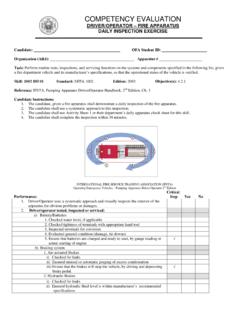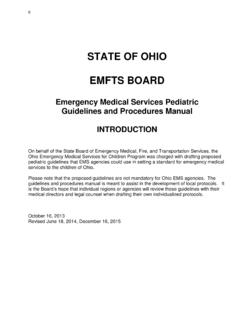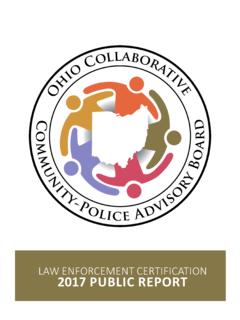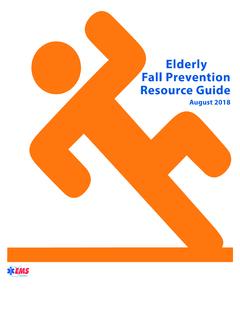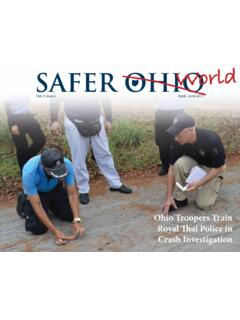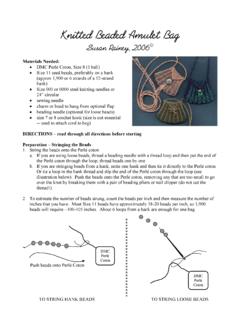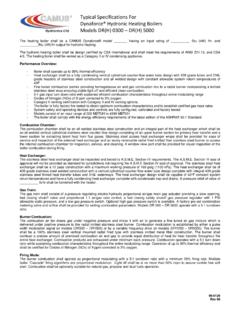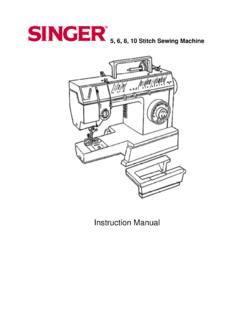Transcription of Motorcycle Ohio Rider Enhancement Rider’s
1 Motorcycle ohio Rider Enhancement Rider s Guide Revised 2016-june-29 rev 20 FORWARD It s about the journey, not the destination. The basic courses offered by the Motorcycle ohio Rider Enhancement (MORE) Program are designed to address the needs and interests of beginning riders . The goal is to help you build a strong foundation of awareness and safety in what may develop into a lifelong activity. Because motorcycling requires mental and physical skills, we will focus on both throughout the courses. You will learn techniques to help sharpen your judgment and perception and learn and improve the physical skills required for riding. Learning is an ongoing process and doesn t end when you finish a course.
2 The basic courses are intended as starting points from which to build lifelong skills. Becoming an experienced, skillful Rider takes time and practice. That, of course, means riding MORE and practicing the techniques presented in these courses. As you gain experience and confidence, we encourage you to continue your formal training. MORE courses are also available for experienced riders (you can find MORE course offerings at ). In addition to helping riders step up to the next level, these courses are a great way to meet other riders and form lasting friendships. So, welcome to the world of motorcycling! We re glad to have you along. Acknowledgments The Motorcycle ohio Rider Enhancement (MORE) Program would like to recognize the Idaho STAR Program, TEAM OREGON Motorcycle Safety Program, and the 2011 National Highway Traffic Safety Administration (NHTSA) publication Model National Standards for Entry-Level Motorcycle Rider Training for assistance in the development of this Rider s Guide.
3 TABLE OF CONTENTS i Unit 1 Welcome to the World of Motorcycling Course Objectives Course Requirements Keeping the Learning Safe and Fun Understanding Expectations General Considerations Ride SMART Ride MORE Safely Unit 2 Risk and Motorcycling The Risk of Riding Accepting the Risks Managing the Risks Unit 3 Preparing to Ride Protective Riding Gear Rider Readiness Unit 4 Wheels in Motion Primary Controls Other Controls and Equipment Mounting and Dismounting Starting and Stopping the Motorcycle Assume Good Riding Posture Getting Underway Turning Shifting Stopping Unit 5 Mental Motorcycling The SIPDE Process Additional Information - Scan Ride SMART Ride MORE Safely by Using Additional Safety Strategies Using SIPDE and Other Safety Strategies Unit 6 Cornering With Confidence Skillful Cornering What s Your Line?
4 Increase Your Cornering Skills Managing Potential Cornering Problems Unit 7 Maximum Braking and Swerving Braking Systems Maximum Straight-Line Braking Handling Skids Stopping Quickly in Curves Swerving Unit 8 Special Situations Obstacle Surmounting Roadway Conditions Animals Wind Night Riding Traffic-Actuated Signal Lights Unit 9 Impairments to Safety Alcohol and Motorcycling A Lethal Mix How Impairments Affect the SIPDE Process Adding Drugs Makes It Worse There is a Cure Help Your Friends Other Impairments ADDITIONAL KNOWLEDGE UNITS Unit 10 Your First Motorcycle What Motorcycle For You? Motorcycle Fit Motorcycle Readiness Inspection and Maintenance Parking Unit 11 Carrying Passengers and Cargo Carrying Passengers Carrying Cargo Differences in Handling Unit 12 Group Riding Wait to Ride With the Group Keep Your Distance TABLE OF CONTENTS ii Unit 13 Mechanical Problems Tire Failure Wobble / Weave Broken Clutch Cable Unit 14 Touring and Long-Distance Riding Build Up Slowly Weather Conditions, Comfort, and Fatigue Be Prepared You Deserve a Break Today (or Several) Unit 15 Riding in the Heat and Cold Riding in the Heat the Importance of Staying Cool (and Hydrated) Riding in the Cold the Importance of Warmth Appendices A.
5 Cornering With Confidence Expanded Content B. Glossary C. Summary of Select ohio Motorcycle Laws and Regulations D. Ride SMART Ride MORE Safely Recommendations E. Range Rules and Hand Signals Select Additional Resources to Ride SMART Ride MORE SafelyUnit 1 Welcome to the World of Motorcycling 1 There is a thrill and a sense of freedom that comes with riding a Motorcycle . It is the rhythm of the ride, the road and surroundings, your Motorcycle , and you. Your senses delight with every passing sight, smell, and sound. To achieve this level of motorcycling magic, you need to be sharp. Motorcycling demands attention and skill. It challenges you to be physically and mentally prepared to handle anything that comes your way.
6 This course is your door to the world of motorcycling. Get ready for the first few miles of your motorcycling career. This is your opportunity to Be MORE! COURSE OBJECTIVES The MORE Basic Riding Skills (BRS) course is intended to help you acquire the basic knowledge and skills needed for safe and responsible Motorcycle operation. The course will help you: Learn the mental skills for safe motorcycling: o Understand the risks associated with motorcycling o Identify and develop strategies to manage risk o Understand how your decisions affect your ability to ride MORE safely Gain the physical skills for safe motorcycling: o Develop the basic skills needed to ride in a straight line, shift, turn, and stop the Motorcycle o Improve basic cornering and braking skills o Practice braking and swerving skills needed for emergency situations The goal is to help you be successful and safe.
7 Ask lots of questions. MORE instructors will help you discover the answers. Concentrate on developing your skills and your strategies the first steps to Riding MORE Safely! COURSE REQUIREMENTS To successfully complete this course, you must: Attend all sessions. Be on time! Classes start promptly. Late-arriving students risk losing their reserved place in the class and tuition. Participate in class activities. Students engaged in class activities learn and remember the material best. Successfully complete a course review activity on the material covered in class and this Rider s Guide. Successfully complete a riding skills test. The skills test consists of exercises practiced in the course, including basic Motorcycle control skills, stopping quickly, swerving, and cornering.
8 Unit 1 Welcome to the World of Motorcycling 2 SCHEDULE Note your course schedule here: Day Time Classroom Range REQUIRED RIDING GEAR 1. DOT-approved helmet Loan helmets are available. You may bring your own helmet; it will be subject to inspection and approval by the instructors. 2. Eye protection Helmet face shield or goggles. Glasses and sunglasses are okay for the basic course but are not recommended for regular street riding. 3. Sturdy, over-the-ankle footwear Ankles must be covered. Low heels are preferred. 4. Full-finger gloves Avoid bulky gloves. Jersey (soft knitted cotton or poly-cotton fabric) gloves are okay for the basic course but are not recommended for regular street riding.
9 5. Long pants (no holes) Sturdy material, such as denim; should reach past the tops of your footwear when seated. 6. Long-sleeved shirt or jacket Sleeves should reach the tops of your gloves with your arms stretched in front of you. Optional rain gear, extra clothing and footwear. (We ride in the rain!) KEEPING THE LEARNING SAFE AND FUN The MORE Basic Riding Skills course is designed for beginning riders . The course starts with the very basics, and riding exercises progress from easy to more challenging. We want you to be successful! Your instructors will assist your learning with classroom activities and hands-on practice in a secure riding area (range). In the classroom, you ll discuss the risks of motorcycling and identify ways to manage those risks.
10 You will learn strategies to become more alert and Notes: Come to sessions rested and ready to ride. Bring snacks and water. Unit 1 Welcome to the World of Motorcycling 3 perceptive, identify features and benefits of riding gear, explore some handling dynamics of motorcycles , and obtain additional knowledge to continue developing your mental and physical skills. On the range, your instructors will provide feedback and guidance to help increase your skills and confidence. The course is not competitive, and riders of all skill levels can learn in a safe environment. Relax and enjoy the experience. You will be given many opportunities to develop essential skills and strategies in a way that ensures your safety and the safety of those around you.
